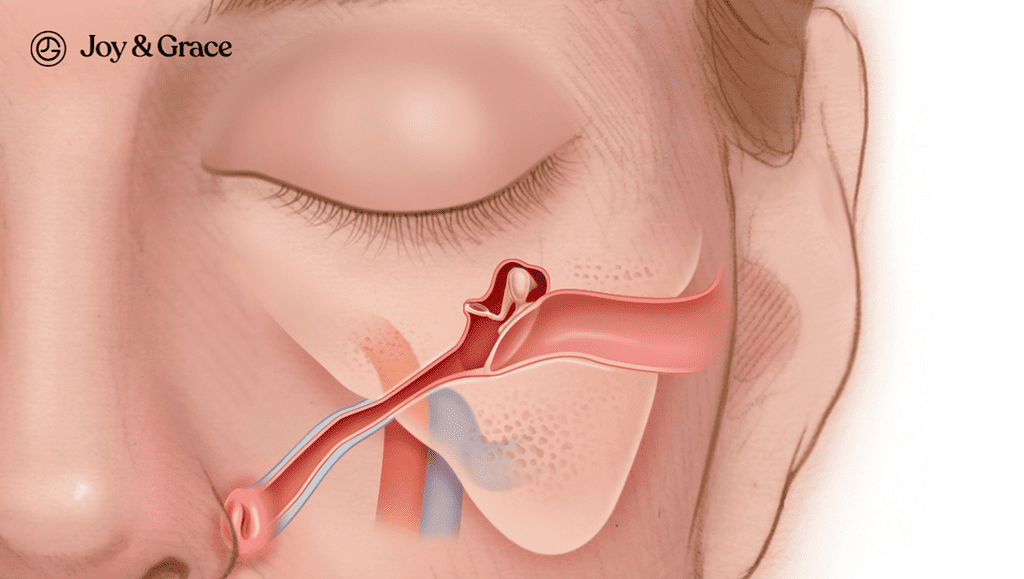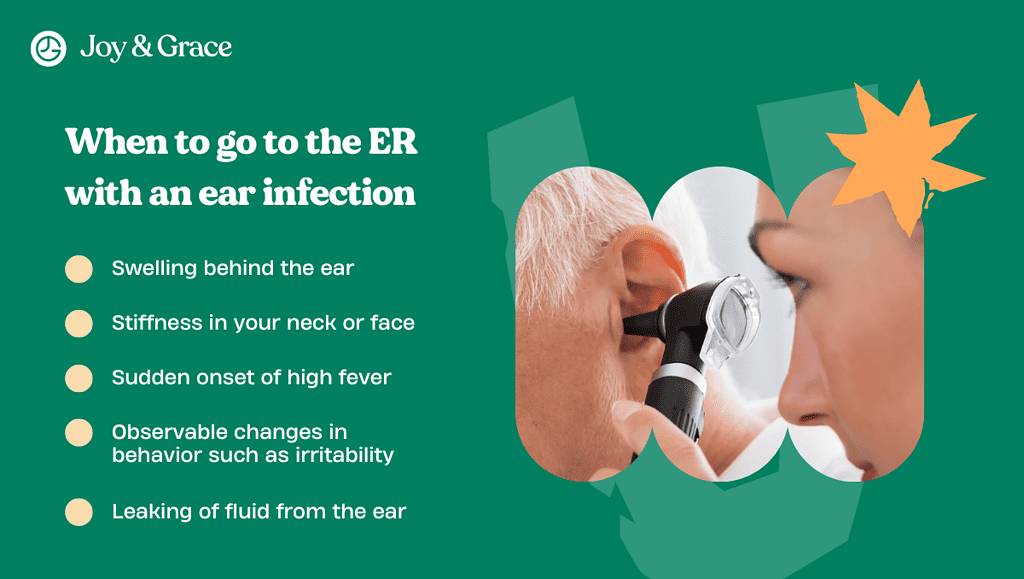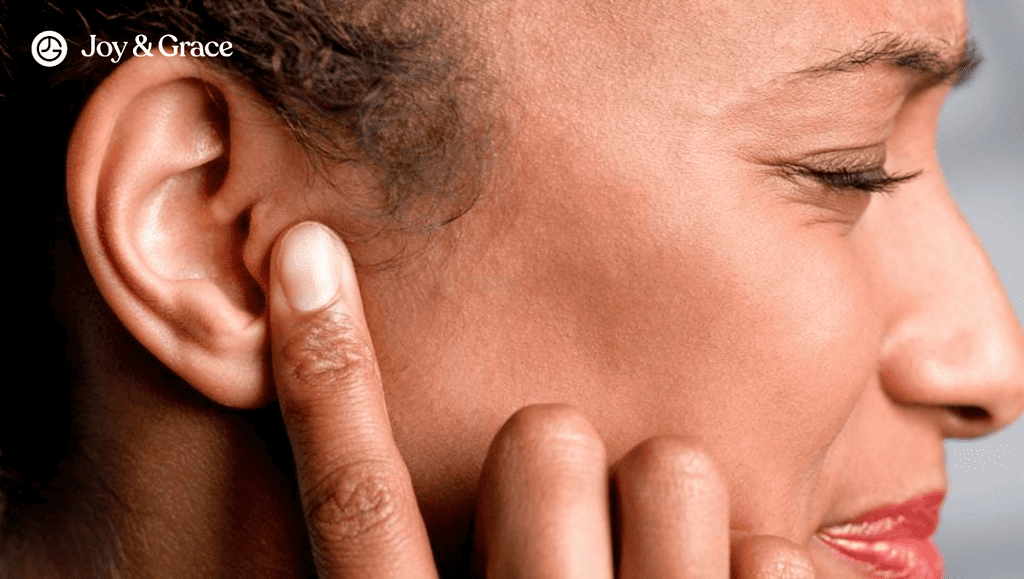Ear infections happen more often in children, but they can also happen in adults. Even though the clinical features of an ear infection in an adult may be the same as those in a child, the root cause may lead to permanent damage to the ear, neck, and throat. Ear infections are most often caused by stuffy noses from a cold or allergies, but they can also be caused by other, more complicated conditions.
Can Ear Infection Cause Jaw and Neck Pain?

In a simple drawing of the ear, nose, and throat area, the eustachian tube connects the ear to the nose and neck. Ear infections, particularly in the middle ear, can jam the eustachian tube with fluid, causing buildup in the tissues surrounding the ear. This can lead to neck stiffness and even dizziness when moving the head. After a while, nasal blockage can lead to “ringing” of the ears and neck stiffness.
When Should Someone with an Ear Infection Go to the ER?

Early on, ear infections start off with mild to moderate ear pain and ringing. If this symptom doesn’t resolve in three days, a visit to a physician may be required. Other symptoms to look for include
- Swelling behind the ear
- Stiffness in your neck or face
- Sudden onset of high fever
- Observable changes in behavior, such as irritability
- Leaking of fluid from the ear.
How Do You Know If An Ear Infection Has Spread to the Brain?
The temporal bone lies at the base of the skull, and consists of four parts. The petrous part of the temporal bone lies just behind a bony projection known as the mastoid, and houses the inner ear.
Any infection in the middle ear (also called ‘otitis media’) causes build-up of fluid or pus inside the ear cavity. This can spread to the nearby muscles and bony cavity and is a medical emergency that needs to be treated immediately.
This fluid can also move upwards into the brain, causing inflammation of the surrounding structures called the meninges of the brain. Meninges protect the brain from infections as well as external injuries.
Inflammation of the meninges is known as meningitis. Symptoms of meningitis include high fever, headache, neck stiffness, loss of orientation to surroundings, and poor appetite.
So earache, which doesn’t reduce over time and is followed by the onset of similar symptoms, is a cause of alarm, as untreated meningitis can cause delirium and seizures.
What Type of Ear Infection Causes Jaw Pain?

As mentioned above, the ear is connected to the nose, throat, and neck regions. Infections of the outer ear region occur less often but can cause severe ear pain, which can radiate to the jaw and neck. Infections of the outer ear are called "swimmer's ear". The outer ear canal extends from the eardrum to the ear opening. The presence of moisture in this canal after swimming causes growth of bacteria and infection. Itching, earache, and occasional pain in the neck and jaw are some signs to look for. The good news is that most ear infections resolve without treatment. The associated jaw pain can be managed with over-the-counter medications such as ibuprofen.
As mentioned previously, the base of the skull has the temporal bone, which has a bony projection known as the mastoid. The mastoid process lies just below the ear opening. Undiagnosed middle ear infections can also spread to the mastoid and cause a condition called mastoiditis. Mastoiditis can also cause ear pain and jaw and neck pain on the same side.
Jaw and Neck Pain without an Ear Infection
Besides infectious causes, another cause of earache with neck pain and jaw pain is any disorder of the temporomandibular joint, or TMJ.
TMJ is formed between the temporal bone and the mandible (which makes the jaw). Any misalignment of the TMJ can cause sharp pain in the jaw, which can radiate upwards to the ear and to the neck below. TMJ disorders can also be caused by degenerative changes, often due to osteoarthritis of the TMJ, causing earache and jaw pain.
Can COVID-19 Hurt Your Ears?
While little is known about the short- and long-term effects of COVID-19, one fact that extensive studies have revealed is that COVID-19 is a virus that impacts the upper respiratory system. This means it can cause coughs and nasal and sinusoidal congestion. Nasal blocking with fluid can jam the eustachian tube, causing fluid to build up in the middle ear. This can lead to earaches and dizziness for many months after being affected by COVID-19.
While these facts are still being studied, it is still important not to disregard earaches. If it persists with onset of other symptoms such as loss of taste and smell, fever and a headache, it is best to visit a physician for further assessment.
Takeaway
It is important to be aware of the underlying pathology of pain in any part of the body. Chronic pain can be debilitating and can affect the quality of life as well as daily routine. Neck pain on moving the head, associated with eating or after swimming, is a cause of concern and requires urgent attention. Ignoring worsening earache, with associated neck and jaw pain, may be hinting at an underlying infection, which may spread to other tissues of the region, and can cause possible irreversible damage. Pain exists as a natural phenomenon in the human body to signal us to give some extra care to certain aspects of our health. So don’t ignore pain; your body is telling you to take it slow and easy.














